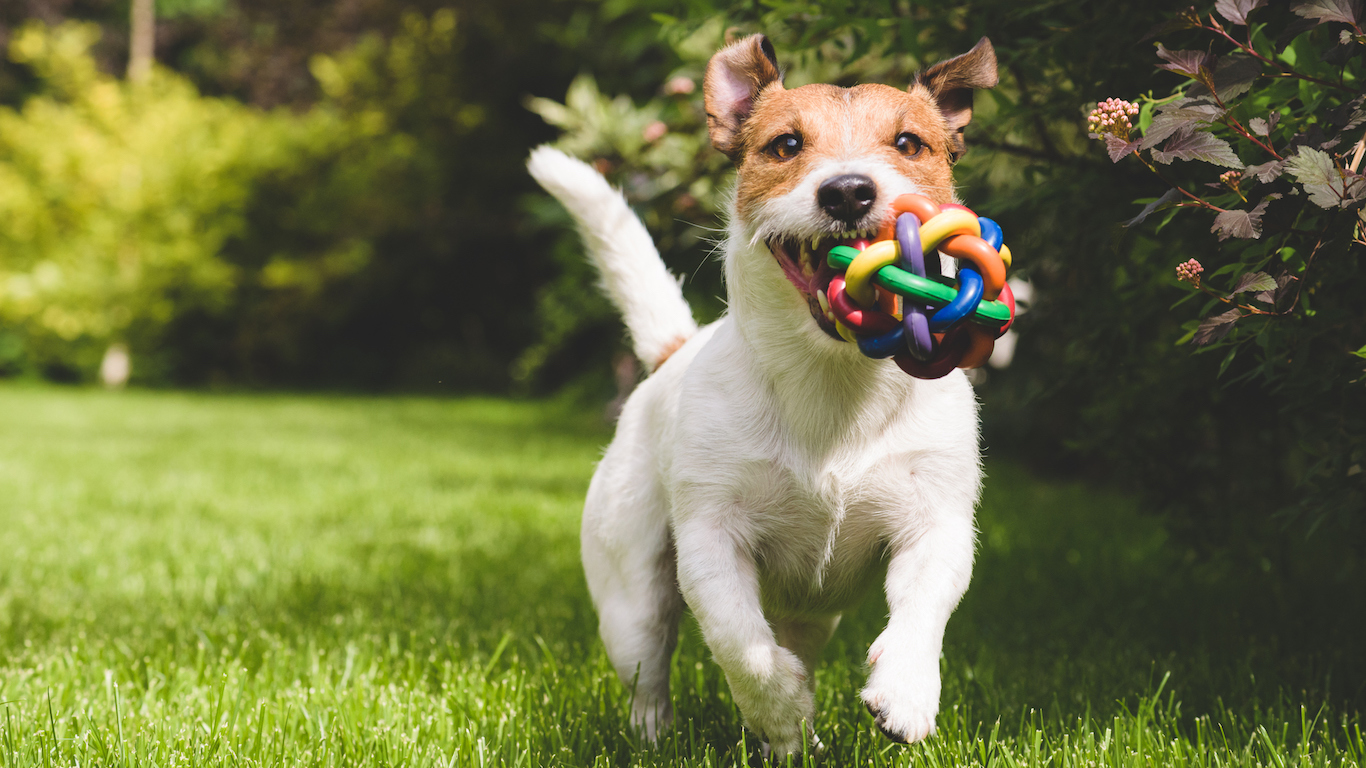Most dog owners realize that there are certain foods they should never feed their pet — dairy products, chocolate, splintery bones, and so on. What might be less apparent to some, though, is that canines have been known to chew on all kinds of things on their own — and there are a number of shrubs, flowers, tree leaves, and other plants that can make your dog sick or even be fatal — these potentially deadly items may be surprisingly common around your house.
According to the American Kennel Club, there are more than 20 plants that can be toxic to dogs. These include commonly found bushes, popular tree varieties, and some of our most familiar flowers. You should know what these are, as you obviously want to prolong your pet’s life. These are the shortest (and longest) living dog breeds in the world.
Among the most dangerous of the plants called out by the AKC include azaleas and rhododendrons, which can cause paralysis, coma, and death; the seeds of the sago palm, which may lead to acute liver failure; the berries, leaves, bark, and flowers of the Chinaberry tree, which can induce seizures and shock; the autumn crocus, which contains a chemical capable of causing gastrointestinal bleeding, kidney and liver damage, and respiratory failure; and foxglove, which may trigger cardiac failure and can kill dogs.
Other plants to keep your dog away from — capable of causing tremors, vomiting, diarrhea, swollen tongue, difficulty breathing or swallowing, bloody stools, skin rashes, and/or cardiac irregularities, among other things — include holly, hydrangea, ivy, oleander, peony, black walnut, horse chestnut, Japanese yew, various fruit and nut trees, begonia, chrysanthemum, daffodil, geranium, iris, lily, lily of the valley, tulip, and hyacinth.
“Don’t fall for the myth that dogs instinctively avoid dangerous plants,” warns the AKC. “While it is sometimes true of animals in the wild, dogs have no ability to distinguish between safe and unsafe plants.” If dog-owners suspect that their pet has nibbled something potentially toxic, they should immediately call their vet, or contact the 24/7 Pet Poison Hotline.
Good diet and regular exercise can lengthen and improve the life of any dog. But the somber truth is some canine breeds live longer than others and it has a lot to do with genetics. These are the shortest (and longest) living dog breeds in the world.
